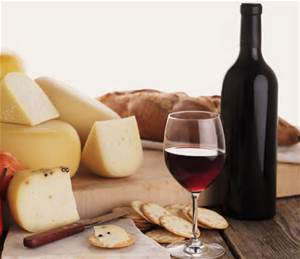May it be in couples’ lives, in clothing, or in a job interview, everything is about matching things together.
Wine is no exception, it’s even one of the fields where matching matters the most. While a good match between meal and wine can create delicious flavours, a mismatch would turn the value added of the wine into a dreadful experience. A mismatched wine can overemphasize or overwhelm some of the food’s taste, but it can also create a new unpleasant taste.
But do not worry, TableApp team is here to teach you the basics of matching !
Red wine: Strong taste for meat and cheese.
Due to its strong taste and its astringency (red are normally very tannic wines), red wine cannot be drunk with every meal. Although through all the spectrum of red wines some can be suitable for seafood due to their light taste, red wine is generally drunk with strong tasting meals.
Therefore, when ordering red meat, chicken or with cheese, order red wine as a side drink.
Depending on the location of the wine producer and the year, the wine will taste different, and you should associate it with food accordingly.
If you want to drink white wine, find another dish, as the white wine would seem tasteless after cheese or meat in sauce dishes.
Tip: Cheese go perfectly well with French Gamay
White wine: Oysters, Foie Gras and Desserts
White wine, although the range of wines belonging to this family is extremely large, is generally of a less astringent, more acid taste, and suits well dishes that require a fine palate such as seafood and fish. When a red wine would overwhelm the food taste, white wine generally suits it perfectly.
 The taste of white wine can differ significantly according to its percentage of sugar: A dry (“sec” in French) wine is very low in sugar (this is the type people commonly refer to when speaking of white wine), and gets along well with fresh oysters while a so-called soft (“moelleux”) wine is generally consumed at the aperitif, before the dinner starts, with foie gras and fig jam toasts for instance.
The taste of white wine can differ significantly according to its percentage of sugar: A dry (“sec” in French) wine is very low in sugar (this is the type people commonly refer to when speaking of white wine), and gets along well with fresh oysters while a so-called soft (“moelleux”) wine is generally consumed at the aperitif, before the dinner starts, with foie gras and fig jam toasts for instance.
White wine can be ordered with any dessert, but it should not be too sugary.
Tip: For a more distinguished drink with fresh oysters, brut Champagne can replace the dry white wine.
Rosé: Aperitif with friends
Rosé is the kind of wine that is not generally considered suitable for a “real” dinner. Rosé (the name comes from its rosy colour) is supposed to be drunk when having some pre-dinner snacks (the so called French aperitif) with friends.
Although sophisticated Rosé do exist, Rosé is thus generally meant to be a casual beverage. Please pay attention that genuine rosé must be made out of red grapes, and not out of a blend of white and red wine.
Tip: Unlike Red but like White, Rosé is better drunk very cold (7 to 12°C)!
The basic know-how of wine-meal matching is a very important part of the Latin food culture, and is notoriously unavoidable in Italian, Spanish and French cuisines. For sure, avoiding the mismatch mistake is very important, but the foremost expert is still the sommelier, so do ask for his recommendations while making your order.
Bon Appétit !
